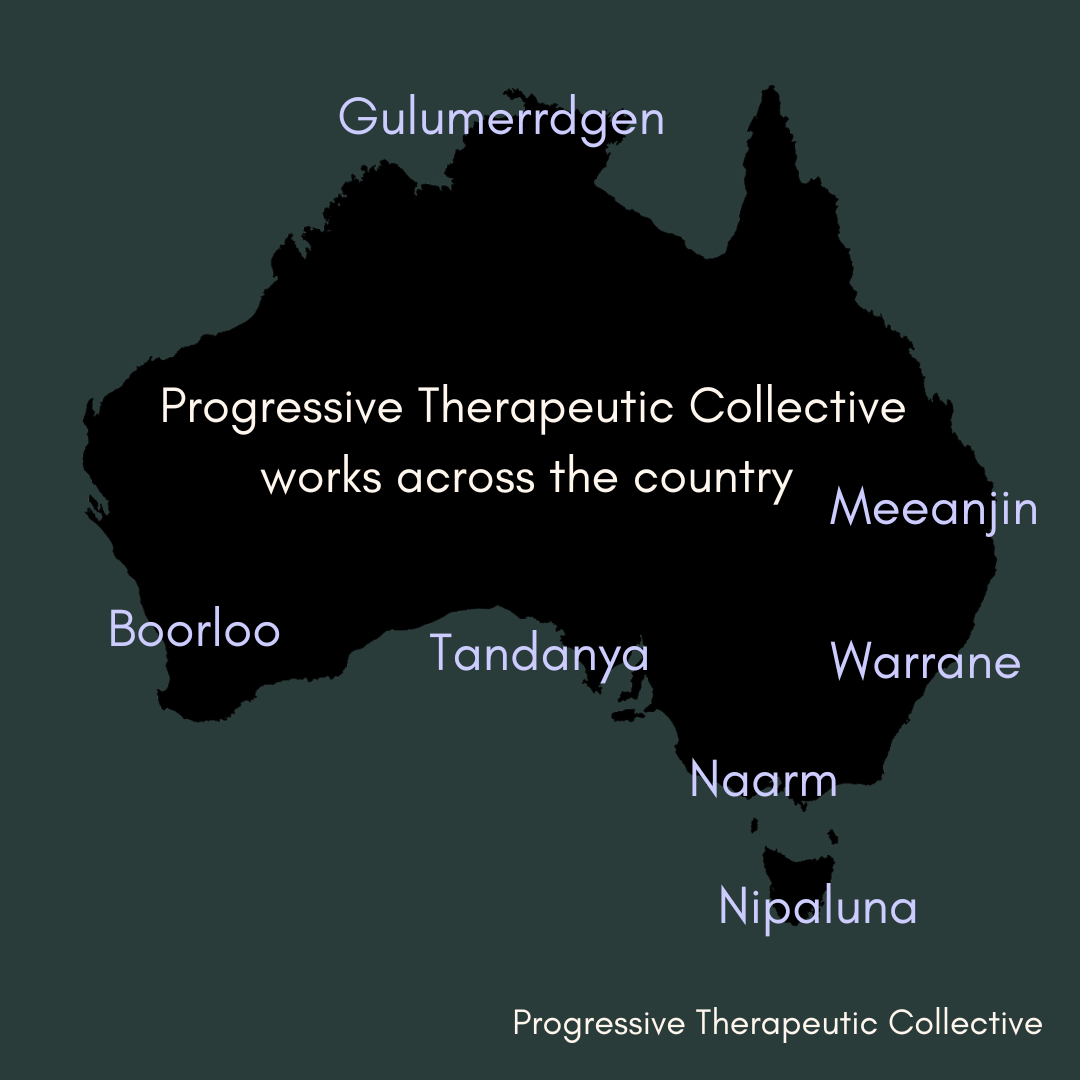Vaginismus:
A gender-affirming guide
Why a gender-affirming & gender neutral approach?
At Progressive Therapeutic Collective, we are dedicated to creating inclusive resources that support the diverse experiences of individuals dealing with vaginismus.
This condition, characterized by involuntary muscle spasms in the pelvic floor, can affect anyone with a vagina, including transgender men, non-binary individuals, and gender-diverse people.
Traditional resources often overlook these unique challenges, leading to feelings of isolation and frustration.
Our gender-affirming guide to vaginismus provides introductory support and information, addressing both the physical and emotional aspects of the condition while respecting all gender identities.
By bridging the gap in existing resources, our guide aims to empower and validate every individual's healthcare journey, fostering a more inclusive and supportive environment for all.
Kidali 39
“I felt overwhelmed and isolated by the pain and discomfort. Finding specialist pelvic physiotherapy and sex therapy was a turning point for me. The pelvic physiotherapy sessions taught me how to relax and control my pelvic floor muscles, which made a huge difference in reducing the pain. Sex therapy provided a safe space to talk about my fears and anxieties, helping me understand and work through the psychological side of things.”
Vaginismus is a condition characterized by involuntary muscle spasms in the pelvic floor muscles, which can cause discomfort or pain during vaginal penetration. This condition can affect anyone with a vagina, regardless of gender identity, and can impact various activities including sexual intercourse, gynecological exams, and tampon use. The muscle contractions are often a response to the anticipation of pain, making it a challenging and distressing condition for those affected.
Diagnosing and treating vaginismus can be challenging due to the intimate nature of the condition and the variety of factors that can contribute to its development. Many individuals may feel embarrassed or reluctant to discuss their symptoms, leading to delays in seeking help. Additionally, there is a lack of awareness and understanding about vaginismus among some healthcare providers, which can result in misdiagnosis or inadequate treatment.
Gender-diverse individuals may face further barriers, including a lack of gender-affirming care and sensitivity, making it even more difficult to receive appropriate support and treatment.
Current Approaches and Path Forward
Current approaches to managing vaginismus focus on a combination of physical, psychological, and educational strategies. Pelvic floor physical therapy, which involves exercises and techniques to relax and control the pelvic muscles, is often a key component of treatment.
Counselling and sex therapy can help address any underlying psychological factors, such as anxiety or past trauma, that may be contributing to the condition.
Education and support for both the individual and their partner can also play a crucial role in managing vaginismus.
Moving forward, it is essential to promote awareness and provide gender-affirming care that respects and acknowledges the diverse experiences of all individuals affected by vaginismus. This inclusive approach ensures that everyone receives the compassionate and effective care they need to improve their quality of life.
DIAGNOSIS
Medical History
A comprehensive medical history is essential for diagnosing vaginismus. Healthcare providers will ask about symptoms such as pain during vaginal penetration, frequency and intensity of the pain, and any other related symptoms. They will also inquire about any past medical conditions, surgeries, sexual history, and psychological factors that might contribute to the condition. Open and honest communication is encouraged to ensure a thorough understanding of the individual's experience.
Physical Examination
A physical examination, usually conducted by a gynecologist or a trained healthcare provider, can help identify signs of vaginismus. The examination may involve a gentle inspection of the external genitalia and a pelvic exam to assess the muscle tone of the pelvic floor. It is crucial that this examination is performed with sensitivity and respect, ensuring the individual's comfort and consent throughout the process.
Pelvic Floor Muscle Assessment
A specialised assessment of the pelvic floor muscles may be conducted to determine the presence of involuntary spasms. This can involve the use of gentle palpation or biofeedback techniques to measure muscle activity and identify any abnormal contractions. Pelvic floor physiotherapists are often involved in this part of the diagnosis.
Psychological Evaluation
Psychological factors can play a significant role in vaginismus. A psychological evaluation may include discussions with a mental health professional to explore any underlying anxiety, past trauma, or other emotional issues that could contribute to the condition. This evaluation helps to identify if there are psychological barriers impacting physical symptoms.
Differential Diagnosis
It is important to rule out other conditions that might cause similar symptoms, such as infections, endometriosis, or structural abnormalities. This may involve additional tests or imaging studies to ensure a correct diagnosis. The process of differential diagnosis helps to confirm that the symptoms are indeed due to vaginismus.
Diagnostic Criteria
There are no universally agreed-upon criteria for diagnosing vaginismus, but the diagnosis typically involves a combination of the above methods. The presence of involuntary pelvic floor muscle spasms and the resulting pain during attempts at vaginal penetration are key indicators. The diagnosis should be based on a comprehensive evaluation that considers both physical and psychological factors.
Misconceptions of Vaginismus
Vaginismus, a condition characterized by involuntary muscle spasms in the pelvic floor, is often surrounded by misconceptions and misunderstandings. These myths can lead to confusion, delayed diagnosis, and inadequate treatment. Let's explore some of the most common misconceptions about vaginismus and shed light on the reality of this condition.
Misconception 1: Vaginismus Only Affects Women
One of the most pervasive misconceptions is that vaginismus only affects women. In reality, vaginismus can impact anyone with a vagina, including transgender men, non-binary individuals, and gender-diverse people. Understanding that vaginismus is not limited to a specific gender identity is crucial for providing inclusive and affirming care.
Misconception 2: Vaginismus Is Always Psychological
While psychological factors such as anxiety or past trauma can contribute to vaginismus, the condition is not solely psychological. It involves involuntary muscle spasms in the pelvic floor, which can have both physical and psychological triggers. Effective treatment often requires addressing both the physical and emotional aspects of the condition.
Misconception 3: Vaginismus Means a Lack of Sexual Desire
Some people mistakenly believe that vaginismus is linked to a lack of sexual desire or interest. However, many individuals with vaginismus have a normal or even high level of sexual desire. The condition is about involuntary muscle contractions that cause pain during penetration, not about the level of sexual interest.
Misconception 4: Penetrative Sex is Impossible
While vaginismus can make penetrative sex painful or difficult, it does not necessarily make it impossible. Many individuals with vaginismus can find ways to enjoy penetrative sex with the right treatment and support. Techniques such as gradual desensitization, pelvic floor exercises, and therapy can help manage and reduce the symptoms.
Misconception 5: It's Just About Sex
Vaginismus affects more than just sexual intercourse. It can also make other activities like tampon use, gynecological exams, and even sitting for extended periods uncomfortable or painful. The impact of vaginismus extends into various aspects of daily life, making it important to address all these areas in treatment.
Misconception 6: Treatment is Quick and Easy
Treating vaginismus often requires time, patience, and a comprehensive approach. It is not a condition that can be resolved overnight. Effective treatment typically involves a combination of pelvic floor physical therapy, counseling, and education. A supportive and understanding healthcare provider is essential for successful management.
Pay the Rent & Mutual Aid
The Pay the Rent movement calls for non-Indigenous individuals and businesses to regularly contribute financially to Indigenous organisations as part of reparations and restorative justice. This movement aims to provide tangible support to Indigenous communities, addressing historical and ongoing injustices while fostering a sense of accountability and solidarity.
At Progressive Therapeutic Collective (PTC), we've been paying the rent since our inception four years ago.
Each year, we allocate 1% of our annual profit to The Westerman Jilya Institute for Indigenous Mental Health and another 1% to Decolonise Sex Work Australia, a Blak mutual aid fund for sex workers. As a white-owned business, we believe it’s crucial to acknowledge and address systemic injustices against Indigenous communities. Our commitment to mutual aid is about taking concrete actions to bring aboug meaningful and genuine social change.













